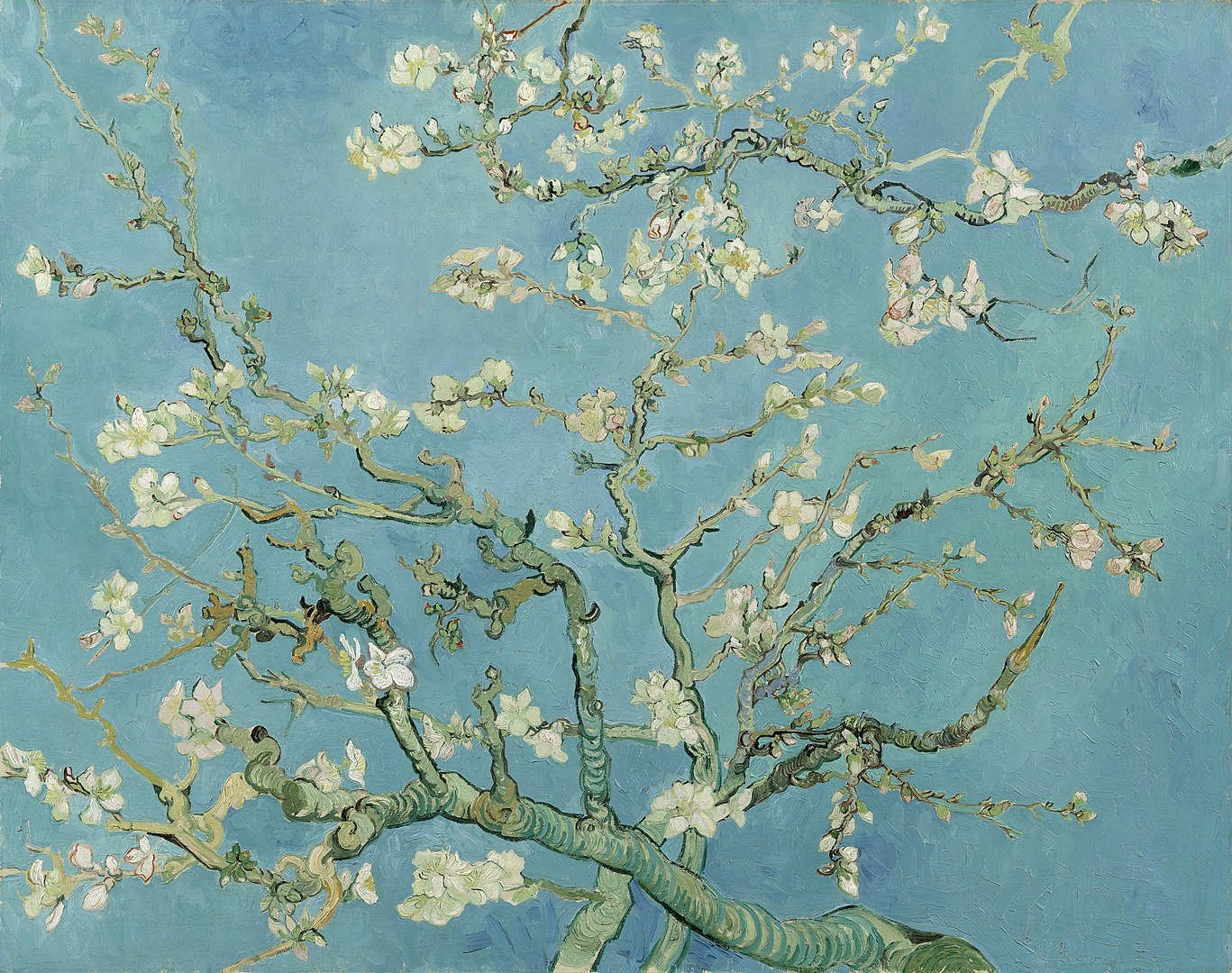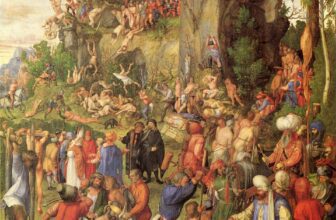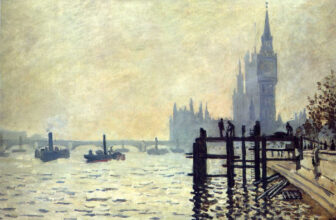
The Story Behind Almond Blossoms by Vincent van Gogh
In the final years of his life, amid turmoil, isolation, and introspection, Vincent van Gogh found beauty in the most delicate and transient of subjects , blossoming almond trees. Painted in 1890, “Almond Blossoms” is a glowing testament to life’s resilience, the promise of spring, and Van Gogh’s enduring love for nature and family. While many of Van Gogh’s works were born from his pain, “Almond Blossoms” carries a message of rebirth, joy, and quiet celebration.
Let’s take a journey into the story behind Almond Blossoms, uncovering its artistic significance, symbolic meaning, and contemporary worth.
A Personal Gift: The Birth of “Almond Blossoms”
“Almond Blossoms” wasn’t a commissioned piece, nor was it painted for exhibition. It was a deeply personal creation. In January 1890, Vincent received joyful news from his brother, Theo: Theo’s wife, Jo, had given birth to a baby boy. In honor of his beloved brother, Vincent painted “Almond Blossoms” as a gift for his newborn nephew, who was named Vincent Willem van Gogh, after him.
For a man who had lived a life plagued by mental illness, alienation, and poverty, the arrival of new life was profoundly uplifting. It represented a fresh start , not just for the Van Gogh family, but symbolically for Vincent himself, who at the time was staying at the asylum in Saint-Rémy-de-Provence, France.
What Does the Almond Blossom Mean in Van Gogh’s Painting?
The almond blossom has long held symbolic weight in various cultures. In the biblical tradition, the almond tree is the first to flower , even before the leaves appear , symbolizing awakening, renewal, and hope. To Van Gogh, these delicate white blossoms held a personal resonance that aligned perfectly with his emotional state and the birth of his nephew.
1. Renewal and Rebirth
Van Gogh painted the almond branches blooming against a brilliant blue sky, capturing the precise moment of spring’s arrival. At a time when he was recovering from a breakdown that led to his self-admission to the asylum, the flowering branches echoed his yearning for healing and transformation.
For Vincent, who often equated human life with the natural world, the almond blossom was more than a tree , it was a metaphor for fragile beauty emerging from harsh conditions. Despite winter’s cold grasp, the almond tree blossoms first, fearless and full of life. It represented the hope that beauty and life can arise, even from suffering.
2. Innocence and New Beginnings
The painting was also a deeply symbolic gift to the newborn Vincent Willem. The soft white petals and gentle branches stand as a symbol of innocence, purity, and a tender welcome into the world. Through the almond blossoms, Van Gogh wished to surround the baby with a vision of peace and optimism, elements often elusive in his own life.
This gesture reveals a side of Van Gogh not always recognized , his capacity for gentle love, his commitment to family, and his longing to contribute meaningfully to the lives of those he loved.
3. Japanese Influence and Harmony with Nature
Van Gogh was heavily influenced by Japanese ukiyo-e prints, which he collected and admired. In “Almond Blossoms”, this influence is unmistakable. The sharply outlined branches against a flat sky resemble Japanese woodblock prints, particularly those of Utagawa Hiroshige.
Japan, in Van Gogh’s mind, represented a place of harmony, simplicity, and a purer relationship with nature. Almond Blossoms blends Western Impressionism with Eastern minimalism, resulting in a unique synthesis that calms the viewer and invites contemplation.
What Type of Art Is “Almond Blossoms”?
“Almond Blossoms” is best classified within Post-Impressionism, a movement that developed as a reaction to the limitations of Impressionism. While Impressionists focused on the fleeting qualities of light and color, Post-Impressionists , including Van Gogh , sought to infuse their works with deeper emotional and symbolic meaning.
Post-Impressionism in Almond Blossoms
Brushwork: Unlike the swirling, expressive strokes of The Starry Night, Almond Blossoms features more controlled and decorative brushwork. The lines are precise, almost graphic, showcasing Van Gogh’s fascination with Japanese aesthetics.
Color Palette: The use of vivid, complementary colors , the turquoise sky and white blossoms , creates a serene yet vibrant visual experience.
Composition: The branches extend diagonally across the canvas, a nod to asymmetrical Japanese compositions. The empty sky background serves not just as a setting, but as a symbolic void, inviting introspection and balance.
While it is stylistically different from many of Van Gogh’s other emotionally turbulent works, Almond Blossoms reflects his evolving artistic voice , one increasingly influenced by serenity, symbolism, and personal reflection.
Multiple Versions and Legacy
There are several versions of Almond Blossoms, all painted between 1888 and 1890. The most famous version is housed in the Van Gogh Museum in Amsterdam, which also preserves Van Gogh’s letters and sketchbooks.
Interestingly, the nephew for whom the painting was made , Vincent Willem , later became instrumental in preserving and promoting Van Gogh’s legacy. He founded the Van Gogh Museum, ensuring that his uncle’s work would inspire generations to come.
“Almond Blossoms” has since become one of Van Gogh’s most beloved and reproduced paintings. Its message of hope transcends time and culture, appealing to viewers of all backgrounds and ages.
How Much Is “Almond Blossoms” by Vincent van Gogh Worth?
Determining the monetary value of a Van Gogh painting is complex. As with all masterworks that reside in museums and are not for sale, the exact value of Almond Blossoms is speculative. However, based on historical art market trends, expert appraisals, and Van Gogh’s auction records, we can estimate its value.
Van Gogh’s Market Value
Van Gogh’s works have consistently fetched astronomical prices at auction. His 1889 painting Portrait of Dr. Gachet sold for $82.5 million in 1990 (around $180 million in today’s dollars).
Irises sold for $53.9 million in 1987.
A landscape painting, Laboureur dans un champ, sold for $81.3 million in 2017.
Given the fame, condition, and historical significance of Almond Blossoms, art historians and appraisers estimate its current value to be well over $100 million, likely between $120–$150 million, should it ever come to market (which is highly unlikely due to its cultural and institutional importance).
Almond Blossoms as Emotional Therapy
Van Gogh painted not just what he saw, but what he felt. Almond Blossoms was painted at a moment when Vincent felt momentarily hopeful. His letters during this time show a man torn between darkness and light. While he was still battling mental illness, he could appreciate life’s fleeting beauty , especially when framed through the lens of familial love.
Art therapists and historians often cite Almond Blossoms as an example of how art can be therapeutic. For Van Gogh, painting the blossoms may have been a meditative act , a moment of clarity in an otherwise chaotic mind.
It is one of the few works where Van Gogh did not depict the harsh realities of peasant life, nightmarish dreams, or personal anguish. Instead, he embraced tranquility, gentleness, and the sublime beauty of a single, blossoming tree.
“Almond Blossoms” in Popular Culture
Beyond museums and auction houses, Almond Blossoms has become a global cultural symbol. It appears on:
Posters, scarves, and fashion apparel
Home décor items and wallpapers
Educational materials and wellness products
The reason it resonates so deeply is its universal message , the promise of renewal, the beauty of beginnings, and the fragile yet enduring nature of life itself.
A Painting for the Soul
“Almond Blossoms” is more than a painting , it is a letter from the heart of one of history’s most misunderstood geniuses. In a life full of rejection and illness, Vincent van Gogh left behind a vision of hope, light, and gentle strength. It was his way of blessing his newborn nephew, but also of blessing the world with a glimpse of healing.
Through those tender white petals and vibrant branches, we see not just the arrival of spring, but the endurance of love, the resilience of beauty, and the infinite possibilities of rebirth.
Even today, standing before Almond Blossoms, viewers are not merely observing a tree in bloom , they are witnessing Van Gogh’s quiet celebration of life. And perhaps, in those fragile blossoms, we find a part of ourselves: hopeful, tender, and ever-reaching toward the light.




